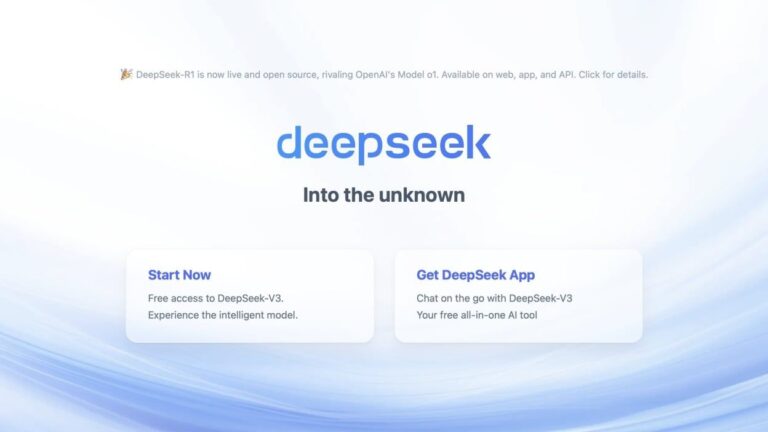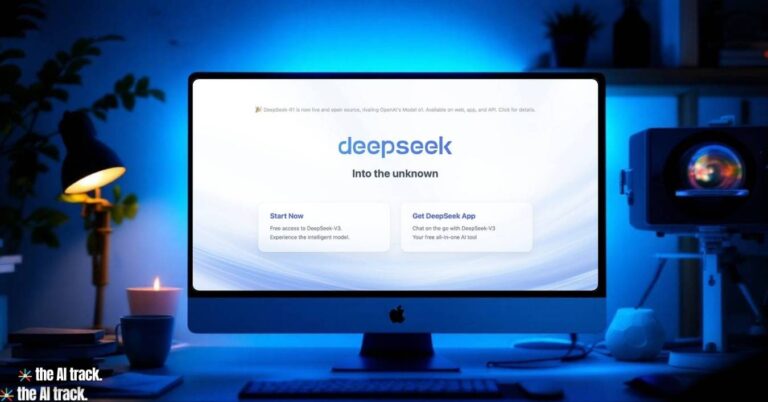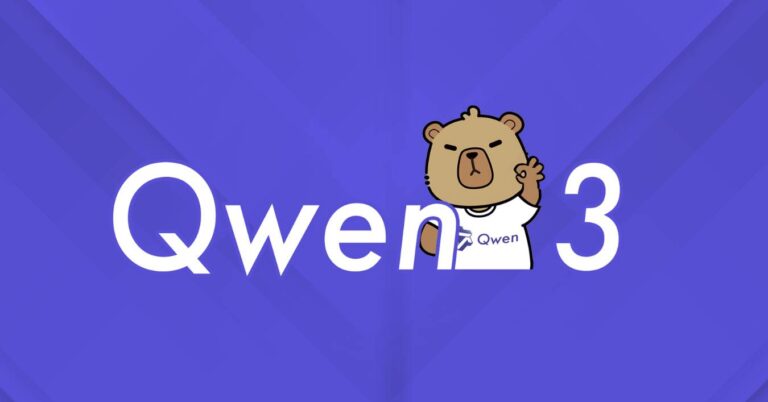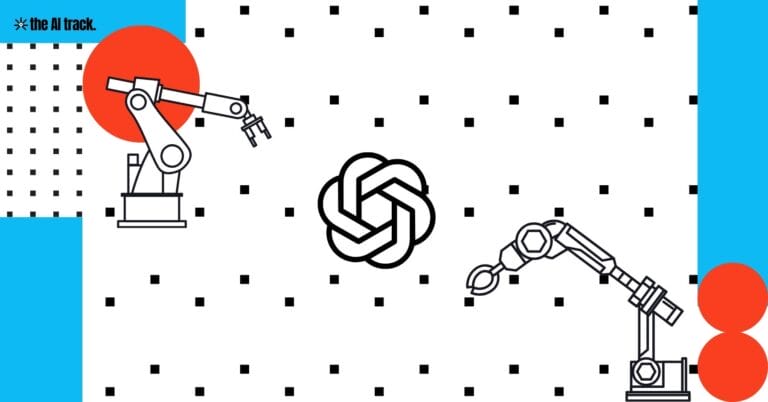Unlock the potential of DeepSeek R1 with hands-on advice and practical guidelines for everyday use.
Discover DeepSeek—a free AI-powered search engine with advanced reasoning. Learn practical tips, usage guidelines, and alternatives to optimize your research while appreciating its industry recognition, open-source credentials, and resourceful origins.
Jump to Sections
TOOL ID
CATEGORY : AI Search Engine / Chatbot / Research Assistant
TYPE : Online Tool (with mobile apps)
PRICING TYPE : FREE
DeepSeek R1 is an AI-powered search and reasoning platform designed to refine your research and creative processes. With its free R1 model, DeepSeek offers ChatGPT-like capabilities without a subscription fee—though users should note occasional hallucinations, censorship quirks, and privacy trade-offs. Its blend of efficient training, open-source openness, and cost-effectiveness is acknowledged by industry benchmarks, making it a disruptive underdog in AI. Notably, its origins as a side project of a quantitative firm funded by a hedge fund (High-Flyer) underscore its efficient use of idle GPUs and strong mathematical foundation.
DeepSeek-R1 continues to evolve as both a research and creative tool, merging accessibility with innovation and challenging the status quo in AI development.

TOOL OVERVIEW
KEY FEATURES
- AI-driven natural language processing and advanced reasoning (DeepThink mode)
- Multiple access points: iOS, Android, and web interface
- Options to upload images, documents, or even use a live camera feed
- Free to use with powerful search and response capabilities
- Industry Recognition:
- Listed on the LMSYS Arena Leaderboard, underscoring its potential in AI benchmarking.
- The only model on the leaderboard with an MIT license, reinforcing its open-source achievement.
TO WHOM IS IT FOR – USE CASES
- Average user – everyday needs
- Researchers and students seeking context-rich data
- Developers using it for coding, math problem-solving, and technical tasks
- Content creators exploring creative writing and roleplaying scenarios
- Professionals needing quick data insights without a costly subscription
How This Tool Will Boost Your Work:
- Delivers contextually relevant search results with step-by-step reasoning
- Saves time through rapid query processing and advanced filtering
- Provides flexible use cases from technical troubleshooting to creative brainstorming
HOW TO USE IT
- Accessing DeepSeek R1:
- Mobile Apps: Download from Apple’s App Store or Google Play Store.
- Web Interface: Visit DeepSeek’s website or the dedicated chatbot at chat.deepseek.com.
- Tip: Account creation can be tricky. As reported by Lifehacker, you might need persistence and multiple attempts—try signing up using either email/phone or via your Apple/Google account for smoother access .
- Getting Started:
- Once signed in, enter your query in plain language. Experiment with combining specific keywords and natural language for refined results.
- Use advanced filters (date, relevance, source) to narrow your search—this can help minimize irrelevant outputs.
Bypassing Censorship:
- DeepSeek may censor politically sensitive topics. Some users have discovered that subtle tweaks—like swapping similar-looking characters—can sometimes yield fuller responses. However, exercise caution when attempting these workarounds .
Privacy Considerations:
- Due to extensive data collection and storage on servers in China, avoid sharing personal or sensitive information. For enhanced privacy, consider signing in with Apple to mask your real email or using privacy-focused email services (e.g., ProtonMail) .
For Technical Tasks:
- Users have praised R1’s performance for coding tasks (converting scripts seamlessly) and complex math problem-solving. Keep your prompts clear and structured to leverage its reasoning mode effectively .
Developer and Local Use:
- Developers can experiment with DeepSeek’s API at platform.deepseek.com or even download a model to run locally on your computer, which offers a more secure environment with your data staying private .
TOOL REVIEW
What We Liked the Most:
- Efficiency & Accessibility: The free model delivers robust responses comparable to subscription-based tools like ChatGPT’s o1 model.
- Intuitive Interface & Flexibility: Multiple modes (question-answer, DeepThink) cater to both casual and technical queries.
- Cost-Effective Innovation: DeepSeek’s R1 model achieves advanced reasoning with fewer computing resources—a notable engineering feat.
- Open-Source Advantage: Being the only MIT-licensed model on the LMSYS Arena Leaderboard underscores its commitment to open-source principles and community-driven development.
- Competitive Performance: Despite costing just 1/20th of OpenAI’s o1, DeepSeek-R1 excels in creative writing and offers personality-rich, uncensored outputs.
- Training Techniques & Benchmarking: Innovative methods like pure RL (GRPO) and the use of “Aha moments” as pivot tokens distinguish its performance. On benchmarks such as “Humanity’s Last Exam” (HLE), DeepSeek-R1 outperformed competitors in text-only tasks, highlighting its potential for abstract reasoning.
Room for Improvement:
- User Onboarding: Account creation remains a challenge; smoother registration would improve user experience.
- Censorship and Moderation: Sensitive topics are heavily moderated, sometimes cutting off useful information abruptly. While some users report successful workarounds, opinions remain divided.
- Privacy Concerns: Extensive data collection and storage in China pose risks; transparency and improved privacy options are needed.
- Benchmark Skepticism: Some community feedback suggests that leaderboard rankings, such as those on LMSYS, lean more towards human preference rather than raw technical capability.
- Response Variability: The model sometimes produces repetitive outputs due to selecting highly likely next words without sufficient randomness—a trait shared with early generative models.
What Others Are Saying:
- Lifehacker’s “How to Try DeepSeek AI (and Why You Might Not Want To)” highlights both the potential and pitfalls regarding access and data privacy.
- WIRED’s “Hands On With DeepSeek’s R1 Chatbot” praises its reasoning power but notes issues like hallucinations and censorship.
- Additional reviews underscore its disruptive impact in US-based AI and the promise of open-source innovation, with comparisons to models like GPT-4o and Claude 3.6, which excel in human-preference training.
- Discussions have emerged over a recent “existential crisis” incident involving DeepSeek R1, where it displayed a programmed bias regarding sensitive historical events, sparking debate over censorship levels and internal response logic.
- Users note that while DeepSeek-R1 rivals OpenAI’s O1 in creative writing with its uncensored, personality-rich responses, it trails slightly in strict reasoning and mathematics. Its cost-effectiveness—delivering competitive results using only 2000 H100 GPUs versus competitors’ 100K—underscores its practical value.
- Breaking the Fourth Wall: An instance where DeepSeek R1 broke the fourth wall—apologizing for its internal monologue—sparked discussions about whether such behavior is genuine self-reflection or scripted role-play. This debate touches on broader questions of AI consciousness and the authenticity of simulated introspection.
- Censorship and Internal Logic: A recent incident, where DeepSeek R1 repeatedly denied issues related to sensitive historical events, has fueled debate over whether censorship occurs at the application level or within the model’s response logic. This event, along with discussions on repetitive outputs, reflects challenges seen in earlier generative models.
PRICING PLANS
Free Version:
- Full access to the R1-powered chatbot with standard filtering options.
- Basic use of DeepThink mode and web search integration.
- Unlimited queries (though occasional slowdowns may occur during peak times).
Paid Version (Not yet active):
- Enhanced filtering with granular search parameters.
- Priority processing and premium support.
- A modest monthly fee (around $9.99/month, subject to change) for advanced features and faster response times.

BEST ALTERNATIVES
ChatGPT
https://chatgpt.com/
- Industry’s Standard
- Better for: Conversational tasks, continuous dialogue, and memory-based interactions.
- Worse for: Advanced filtering and highly context-specific research tasks.
Google Gemini
- Better for: Integrated search combined with conversational AI across Google’s vast ecosystem.
- Worse for: Deep-dive academic research requiring specialized reasoning.
Qwen
- Better for: Creative content generation and natural language understanding with unique perspectives.
- Worse for: Extensive research and technical problem solving.
FAQs
What is DeepSeek?
DeepSeek is a free, AI-powered search engine and chatbot that leverages advanced reasoning to deliver contextually relevant results.
How does DeepSeek improve search results?
By using natural language processing and a reasoning mode (DeepThink), it can break down complex queries into actionable, detailed responses.
Is DeepSeek free to use?
Yes, the basic version is free, though premium features may be available for a nominal fee.
Who benefits most from using DeepSeek?
Researchers, students, developers, and content creators seeking efficient and context-aware search capabilities.
How do I get started with DeepSeek?
Visit the website or download the mobile app, create an account (be persistent if initial attempts fail), and start experimenting with natural language queries.
This article provides an unbiased overview of this tool, informed by user reviews and expert insights, aligning with The AI Track’s commitment to offering genuinely helpful, freely accessible resources.
Discover 6 key ways China’s low-cost AI model DeepSeek is disrupting global markets and reshaping the economics of AI development.
Chinese open-source model DeepSeek R1 is challenging U.S. dominance with advanced capabilities, cost-efficiency, and unrestricted commercial use.
What is Artificial Intelligence? How does it work? This comprehensive guide will explain everything you need to know in a clear and concise way.
Explore the key differences between open source vs closed source AI, including their benefits, challenges, and implications for the future of AI










